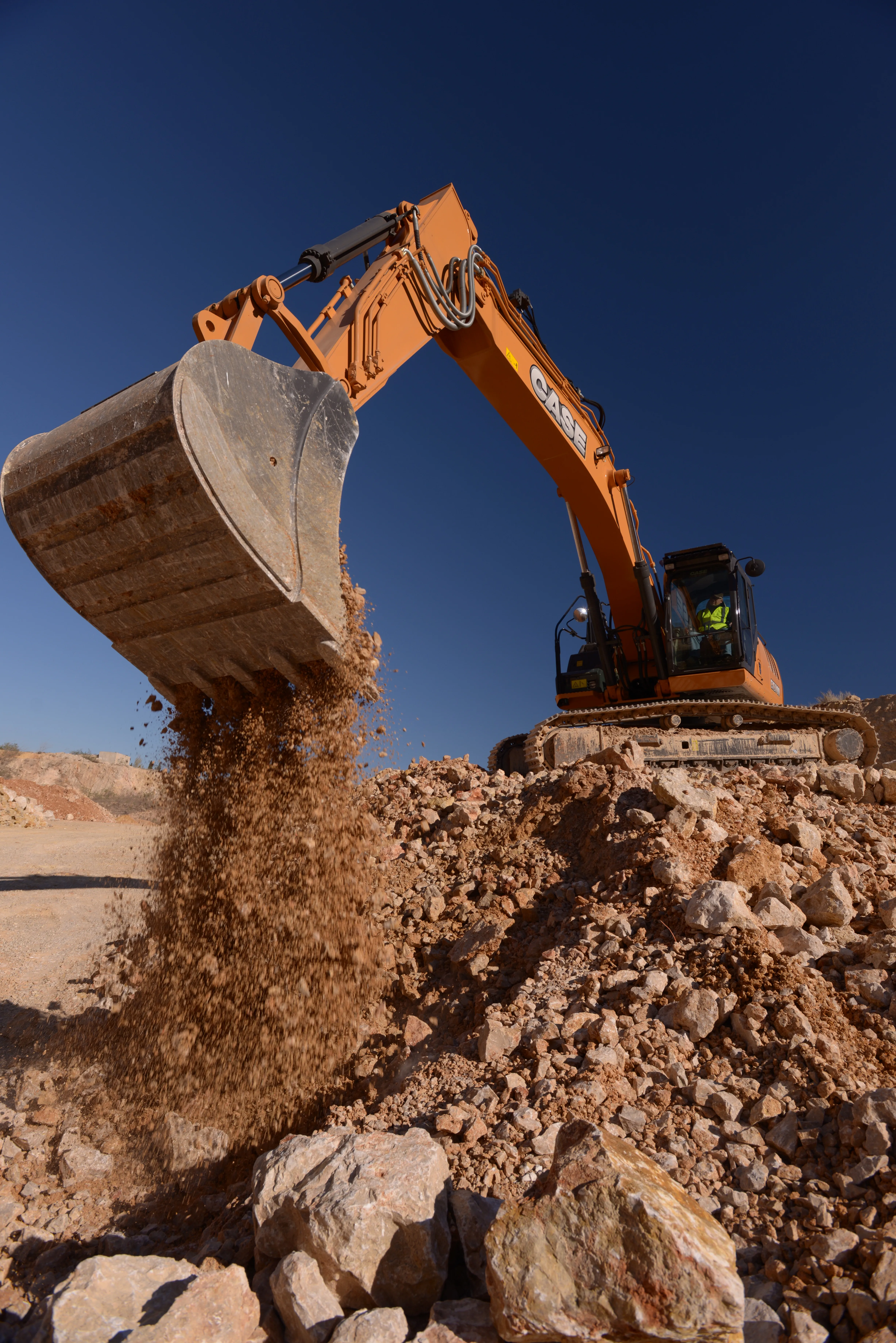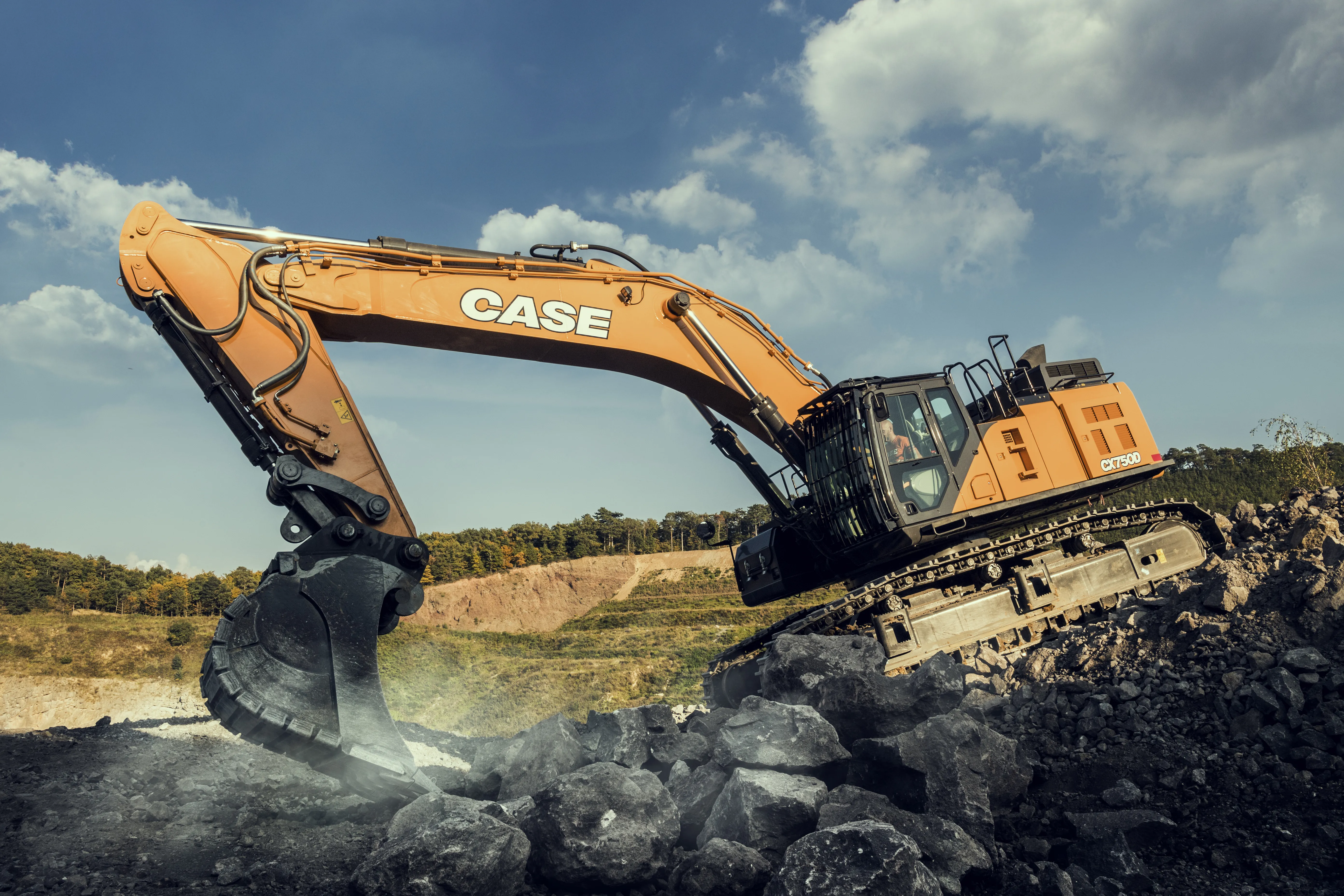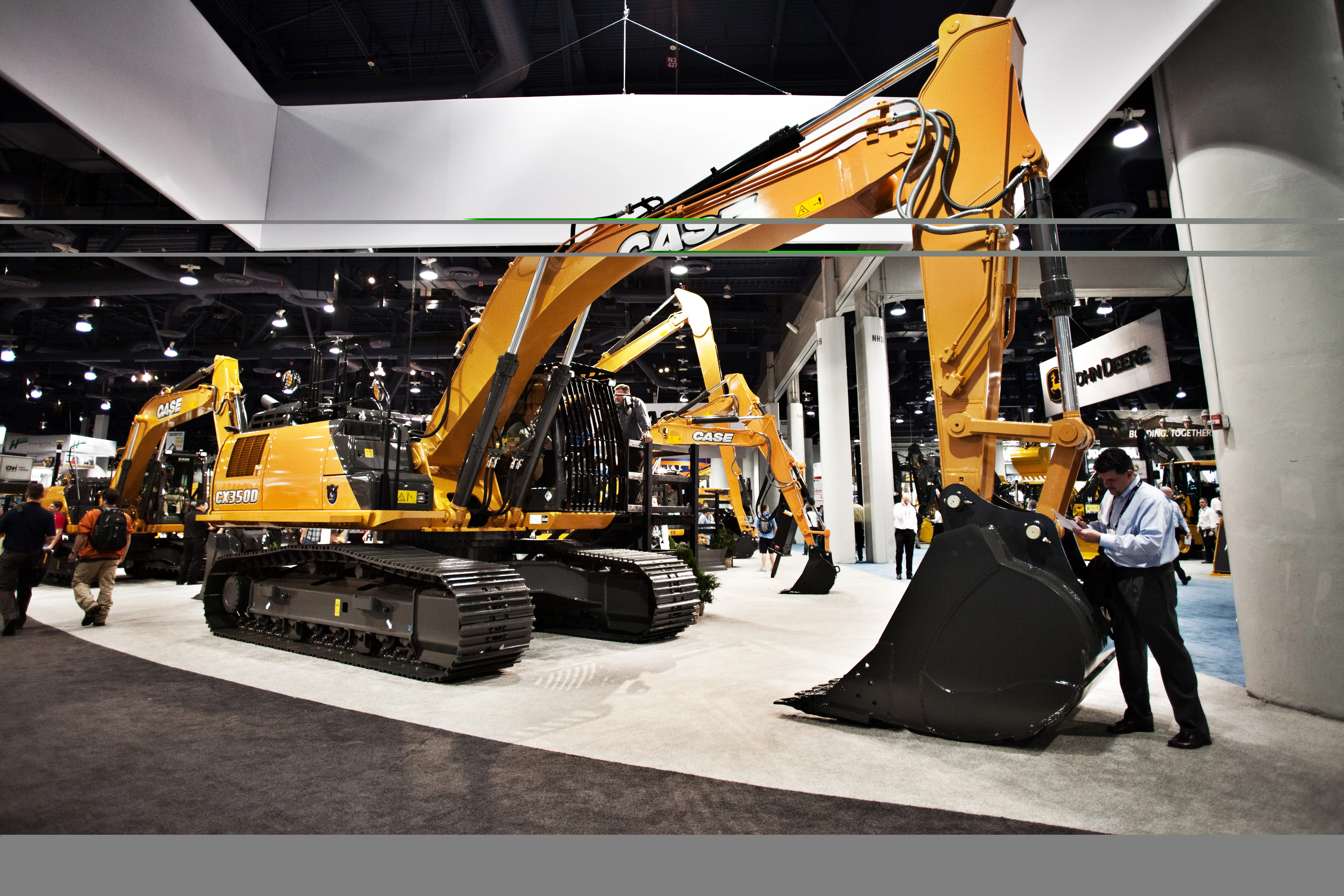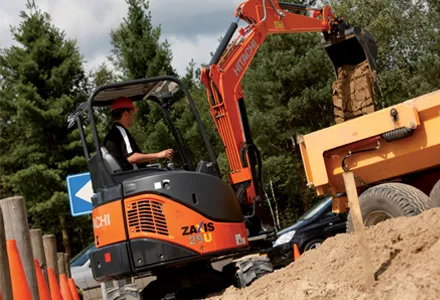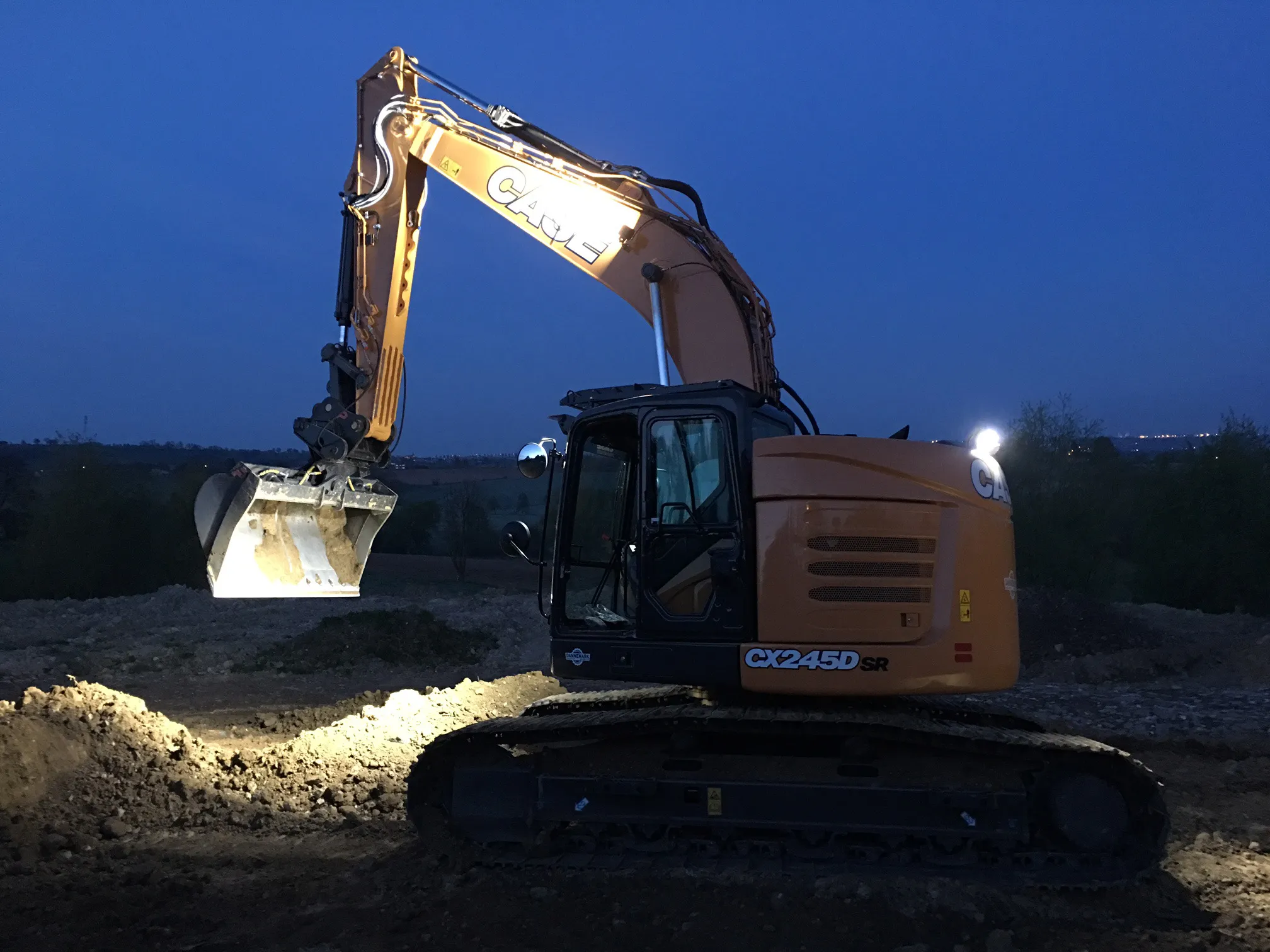
Terrassement Berger, based near Liège, Belgium, purchased the minimum-swing radius CX245D SR excavator even before it was launched. The contractor specialises in earthmoving work in urban and extra-urban jobsites. They wanted a machine that would enable them to expand the type of jobs they took on.
The CX245D SR minimum-swing radius excavator is designed to provide increased digging and lifting power in confined work areas. The compact counterweight and modified boom placement minimise the machine’s footprint, making it a highly productive and manoeuvrable excavator that’s ideal for restricted conditions.
With an operating weight of 26tonnes and a 119kW Tier 4 Final/Stage IV engine, it offers more bucket digging forces and lift capacity than its predecessor, according to Case. The new electronically controlled pump, larger control valve and multiple sensors result in faster cycles.
These features combine with the CASE Intelligent Hydraulic System and the CASE advanced energy management to make the best use of the machine’s hydraulic power and momentum, resulting in added strength, maximum power and fuel efficiency.


